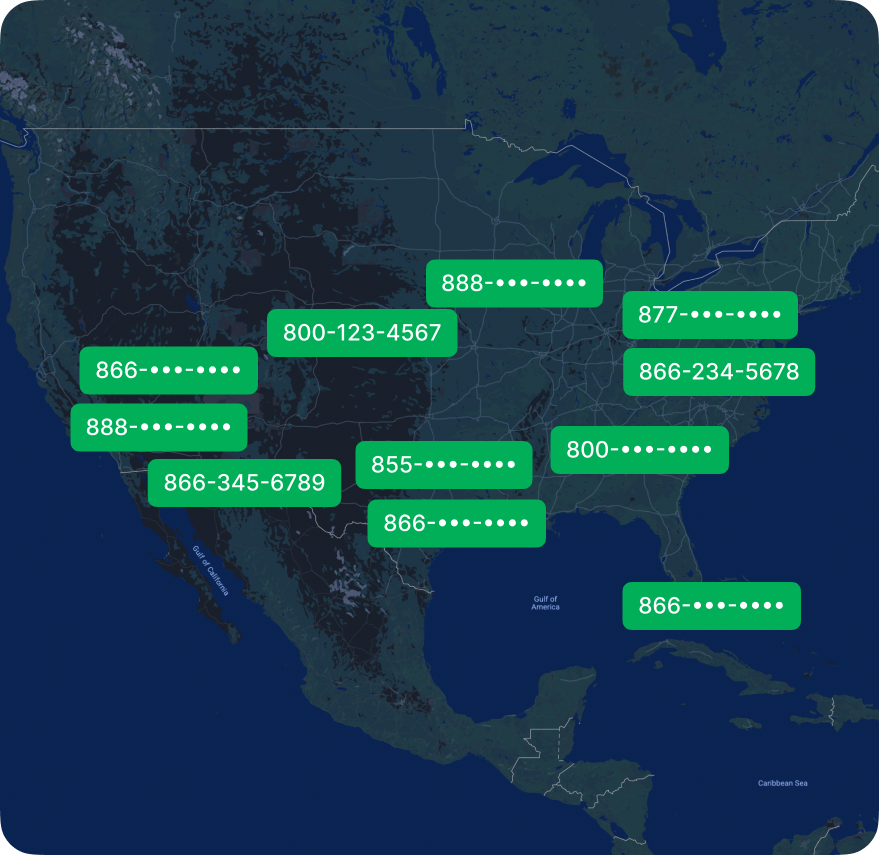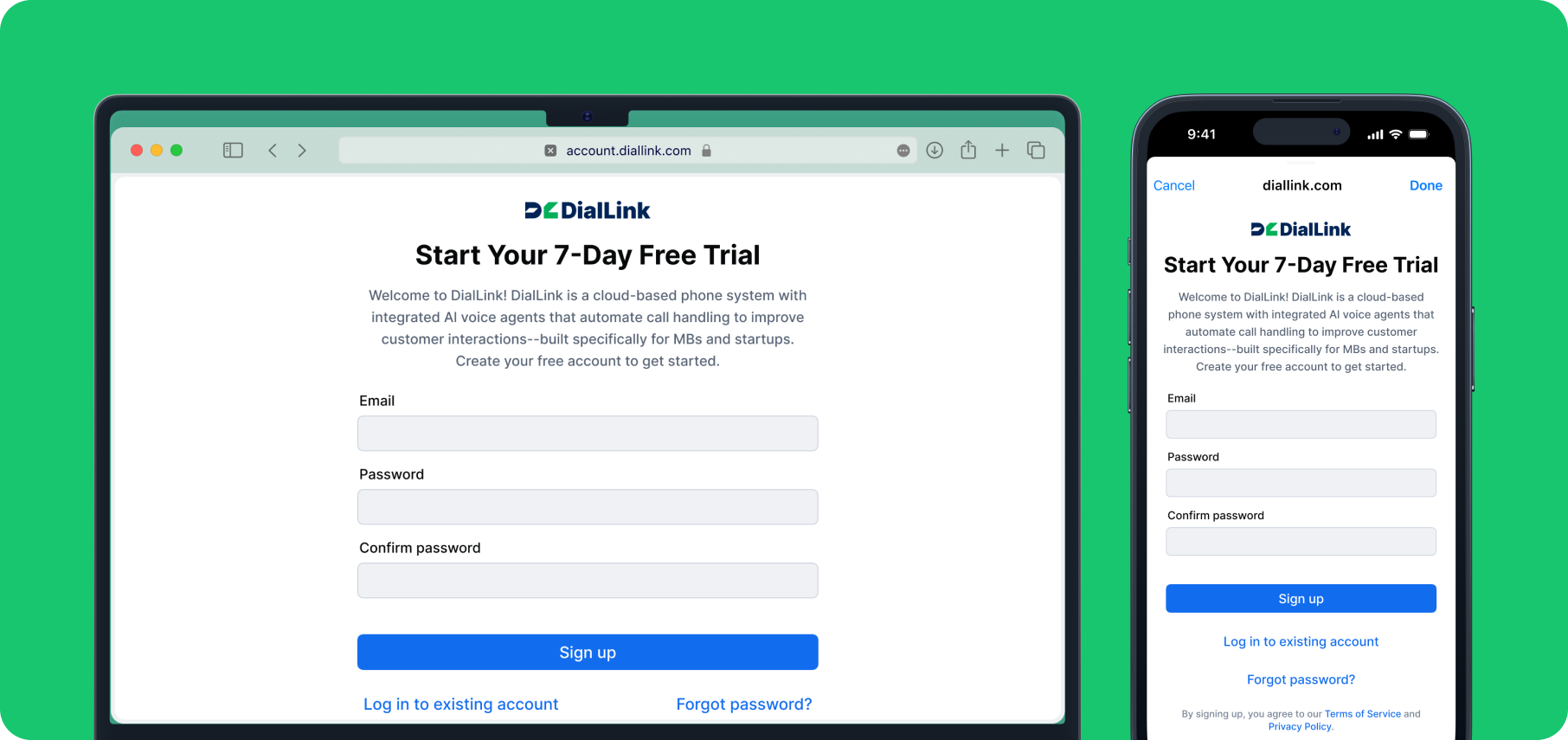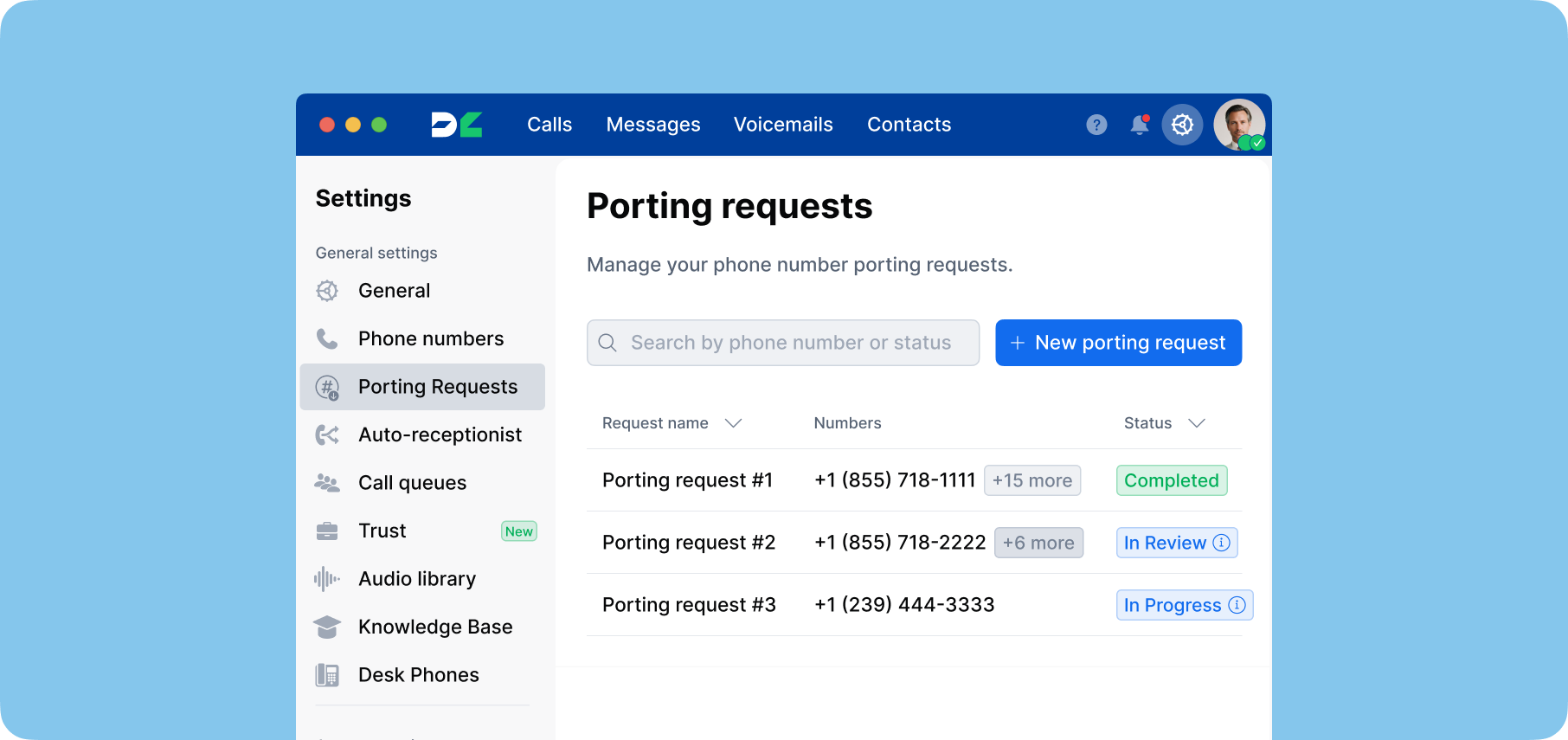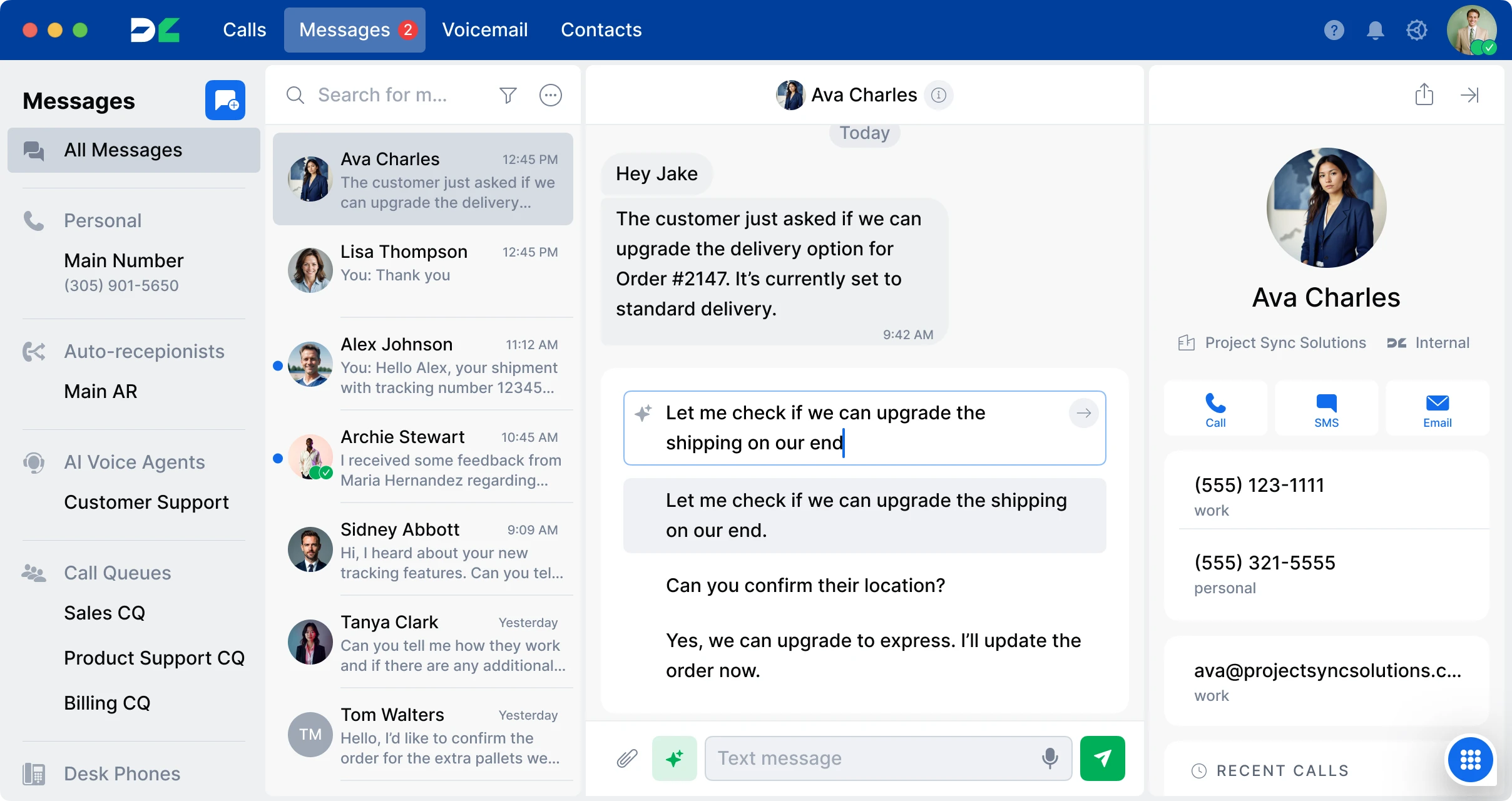Blog
Cloud Phone System
What Is a Toll-Free Phone Number and Why Your Small Business Should Have One

What Is a Toll-Free Phone Number and Why Your Small Business Should Have One
Find out what a toll-free number is, the costs associated with it, and how to get a toll-free phone number for your business.
Toll-free phone numbers have long been a trusted way for businesses to stay connected with their customers. They provide a single, easy-to-remember number that customers can call without being charged.
While toll-free numbers were once primarily used by large corporations, today many small and midsize businesses are exploring whether having one makes sense for them.
In this article, we’ll cover everything you need to know about toll-free numbers: what they are, how they work, their costs, and how to get one for your business.
What is a Toll-Free Phone Number?
A toll-free phone number is a business phone number that allows customers to call a company without paying for the call. Instead, the business that owns the number covers the cost of incoming calls. This setup removes a potential barrier for customers, encouraging them to reach out for support, sales inquiries, or service questions without worrying about long-distance charges.
Toll-free numbers are easily recognizable by their distinct prefixes. In the United States and Canada, they begin with specific three-digit codes, the most familiar being 1-800 (or simply 800). Over time, as demand for toll-free numbers grew, new prefixes were added to expand availability.
U.S. and Canada Toll-Free Phone Number Prefixes
- 1967 – 800 toll-free phone number introduced: AT&T launched the first 1-800 numbers, marking the beginning of toll-free calling.
- 1996 – 888 toll-free phone number added: The first alternative to 800, introduced to meet rising business demand.
- 1998 – 877 toll-free phone number released: A second expansion as businesses increasingly adopted toll-free service.
- 2000 – 866 toll-free phone number introduced: Opened to further accommodate growth in the early 2000s.
- 2010 – 855 toll-free phone number launched: Brought new options as more companies moved to cloud-based phone systems.
- 2013 – 844 toll-free phone number introduced: Continued expansion to keep up with nationwide toll-free use.
- 2017 – 833 toll-free phone number added: The most recent toll-free prefix, ensuring ongoing availability.
Today, all these prefixes work the same way. The only difference lies in their visual format and availability when selecting a new toll-free number.

Toll-Free vs. Vanity Phone Numbers
A vanity number is a type of toll-free number customized with memorable letters or patterns, such as 1-800-FLOWERS or 1-888-LAW-HELP. These numbers not only provide free calling for customers but also serve as powerful marketing tools by reinforcing brand recognition.
Toll-Free vs. Local Phone Numbers
While toll-free numbers project a national and professional image, local phone numbers give businesses a community-based presence.
| Feature | Toll-Free Number | Local Number |
|---|---|---|
| Prefix | 800, 888, 877, etc. | Based on geographic area code (e.g., 212 for NYC) |
| Caller Cost | Free for the caller; business pays | Caller pays standard or local rates |
| Perception | National, established, customer-focused | Local, familiar, community-driven |
| Best for | Businesses serving customers nationwide | Local service providers or regional businesses |
Many modern businesses use both: a toll-free number for national reach and local numbers to build trust in specific markets.
How Do Toll-Free Phone Numbers Work?
From the customer’s perspective, toll-free numbers work just like any other phone number. Callers simply dial the number, starting with “1”, followed by one of the toll-free prefixes. For example: 1 (800) 123-4567.
When a customer dials a toll-free number, the call is automatically routed through the telecommunications network to the business that owns that number. The key difference is in who pays for the call: instead of the caller, the business covers the cost of incoming calls.
Toll-free numbers are accessible from anywhere in the United States and Canada, giving businesses a single point of contact that customers can dial no matter their location. This nationwide reach makes toll-free numbers especially valuable for companies that serve customers across multiple states or regions.
Toll-free numbers are fully compatible with mobile phones, meaning that customers can call them directly from their cell phones without incurring charges. To make calling even easier, many businesses include click-to-call buttons on their websites, emails, and ads, so users can connect instantly from their mobile devices, tablets, or laptops with just one tap.
Customers can also send text messages to toll-free numbers, as long as those numbers are “text enabled”.
For businesses, toll-free numbers may work slightly differently depending on the setup. You can choose between a standalone toll-free service or a full-featured business phone system that includes toll-free numbers as part of a larger communications platform.
Toll-Free Phone Number Use Cases
Toll-free numbers are highly versatile and serve multiple purposes beyond customer support. Whether you’re a small business or an established enterprise, they help centralize communication and automate everyday workflows. Below are the most common and effective ways businesses use toll-free numbers today.
Main Business Line to Connect All Departments
A toll-free number can serve as your primary business contact line, giving customers one easy-to-remember number to reach your company. You can configure call routing behind the toll-free number to automatically direct callers to the right department, such as sales, support, billing, or management without the need to manage multiple separate lines.
Customer Support and Service Lines
Toll-free numbers remain the gold standard for customer service hotlines, allowing customers to reach your team without paying for the call. They’re ideal for handling product inquiries, technical issues, or service requests.
Automated Notifications and Reminders
Businesses can use toll-free numbers to send automated text messages or voice calls for reminders, alerts, and updates. Common examples include:
- Appointment confirmations and reminders
- Delivery or order status updates
- Payment due or renewal notifications
Verification and Security Messages
Toll-free numbers are also ideal for automated verification messages, such as:
- One-time passcodes (OTP)
- Two-factor authentication (2FA) alerts
- Account confirmation messages
- Password reset links and notifications
Because toll-free numbers are officially registered for business use with mobile carriers, they provide better deliverability and appear more trustworthy than random shortcodes or local numbers.
Marketing and Lead Generation Campaigns
Toll-free numbers can play a major role in marketing and advertising campaigns, especially when paired with vanity numbers (e.g., 1-800-FLOWERS or 1-888-LAW-HELP). These numbers are easier to remember, look professional on ads, and help track which campaigns drive the most inbound calls.
Key Benefits of Toll-Free Phone Numbers for Small Businesses
While toll-free numbers offer a free and convenient way for customers to reach you, they also deliver significant advantages for businesses of all sizes. Below are the key reasons why toll-free numbers are a smart investment for companies.
Build a Professional Image and Credibility
Having a toll-free number instantly makes your business appear more established and trustworthy. Customers associate toll-free prefixes like 1-800 with reputable, customer-focused organizations. Even small businesses can project a national, enterprise-level image by using toll-free numbers.
Create a Nationwide Presence
Toll-free numbers aren’t tied to a specific city or state, which gives your business a nationwide identity. Whether you serve clients locally or across the country, a toll-free number shows that your company is easily accessible and ready to serve customers anywhere in the U.S. or Canada. This makes it especially valuable for online businesses, service providers, or franchises operating in multiple locations.
Increase Call Volumes and Customer Engagement
Since toll-free calls don’t cost customers anything, they’re are more likely to reach out for inquiries, support, or sales. This reduces friction in communication and can directly lead to higher call volumes and better conversion rates. For sales-driven organizations, removing the cost barrier helps capture more leads and improve customer satisfaction.
Centralize and Optimize Incoming Calls
When connected to a business phone system, toll-free numbers can route calls from across the country to a single contact center or team, helping businesses manage inbound communications more efficiently. With advanced call management and analytics, you can direct callers to the right department — such as sales, support, or billing — and monitor call data like volume, duration, logs, and outcomes. This helps optimize call flows and ensure no customer call goes unanswered.
Why Toll-Free Numbers Aren’t Just for Large Organizations
For a long time, toll-free numbers were seen as a symbol of big corporations — the kind of number you’d expect to see on national TV commercials or major customer service hotlines. But that perception has changed. Today, toll-free numbers are accessible, affordable, and practical for businesses of all sizes.
- Affordable and easy to set up: Modern cloud-based communication platforms have made business toll-free numbers cost-effective and simple to manage. There’s no need for expensive hardware or traditional phone lines. You can activate a toll-free number in minutes and route calls to mobile devices, desktops, or any existing business line. This flexibility puts toll-free communication within reach of small and midsize businesses that previously couldn’t justify enterprise telecom costs.
- Builds trust and credibility from day one: A toll-free number helps new or growing businesses look established and trustworthy. It tells customers your company is serious about communication and ready to support them. That professional image can make a major difference in how customers perceive your brand and how confident they feel reaching out.
- Ideal for remote and online businesses: Because toll-free numbers aren’t tied to any physical location, they’re ideal for distributed or remote-first teams. You can maintain a single, centralized contact point for customers across the U.S. and Canada while your employees operate from multiple cities or even different countries.
How Much Do Toll-Free Phone Numbers Cost for Businesses?
The cost of acquiring and using a toll-free number varies depending on the provider and the type of phone system you use. In the U.S., toll-free numbers can be purchased from any Responsible Organization (RespOrg) approved by the Federal Communications Commission (FCC).
Some providers charge around $15 per number per month, while others may go as high as $30 or more depending on included features. Keep in mind that this fee typically covers only the number itself, not the setup or ongoing usage. The total cost depends on how the number is connected, whether it’s installed on a traditional landline or integrated into a VoIP (Voice over Internet Protocol) business phone system.
Because VoIP systems require minimal hardware and setup, adding toll-free numbers to a VoIP phone system is generally much cheaper and more flexible than adding them to a landline setup.
Below are the main cost factors to consider when budgeting for a toll-free business number:
- Setup fees: Most virtual or VoIP phone systems don’t require hardware installation fees. You may only pay a small one-time carrier activation or review fee, typically under $20. In contrast, adding a toll-free number to a traditional landline may require new phone jacks, wiring, or compatible hardware, which can cost several hundred dollars upfront.
- Phone number fees: Most business phone system providers include one phone number (local or toll-free) as part of their subscription plan. Any additional toll-free numbers usually cost between $7–$10 per month, depending on your provider.
- Monthly platform subscription fees: As with any cloud-based solutions, you’ll pay a monthly service fee to your provider. With VoIP-based business phone systems, that subscription fee covers much more than just the number. Depending on your plan, typically ranging from $15 to $40 per user per month**,** you’ll also get access to advanced communication features such as:
- Automated call routing
- Voicemail and call recording
- Business text messaging
- AI-powered tools and analytics
These features often make cloud-based systems more cost-effective than maintaining separate landline accounts for each department or location.
- Usage costs: As you already know, the owner of a toll-free number is responsible for covering all call-related charges. Rates vary by provider: some charge per minute for each inbound or outbound call, while others offer minute bundles or unlimited calling plans depending on your subscription tier.
In most cases, VoIP providers deliver more flexible and cost-effective usage plans than traditional telecom carriers, making them a better option for businesses
- International calling considerations: Toll-free numbers are free for callers only within the same country. If someone outside the U.S. calls your toll-free number, either the caller or your business may incur international calling charges. Typically, U.S. toll-free numbers aren’t accessible worldwide, so if your business serves international customers, you may need to set up a local line or an international toll-free service, which comes with its own pricing structure.
How to Get a Toll-Free Phone Number with DialLink?
With DialLink, getting your toll-free number is fast and requires no technical setup. You can get started in just a few simple steps:
- Create your DialLink account using your email address and you’ll receive a free 7-day trial to explore all features and experience how DialLink streamlines business communication.

- Once you’re in the platform, simply add a toll-free number by selecting from the available options. If you prefer a specific prefix (e.g., 800, 888, or 877), you can use the selection form below to check availability.
Choose Your Local Phone Number
Already have an established toll-free number you want to keep? Good news: you can easily port your existing number to DialLink using our automated number porting process. It’s quick, secure, and ensures zero downtime for your business.

- Once your toll-free number is added, you can start sharing it with customers on your website, social media, or marketing materials and begin receiving calls right away.
If you’d like to send and receive text messages from your toll-free number or display your business name on landlines for outbound calls, you’ll need to complete a simple registration with U.S. carriers within the DialLink platform. This ensures proper message delivery, Caller Name (CNAM) display, and full compliance.

Don’t forget to take advantage of all the advanced tools that come with your DialLink business phone system. You can assign your toll-free number to:
- An auto-receptionist to greet callers professionally and route them to the right department.
- Ring groups to have incoming calls ring multiple team members simultaneously, ensuring faster response times.
- Call queues to place callers in a virtual waiting line and even offer them a callback option, so they don’t have to stay on hold.
- AI voice agents to handle routine calls automatically, freeing your team to focus on more complex or high-value conversations.
With DialLink, your business toll-free number becomes more than just a line. It’s a smart communication hub that helps your business stay organized and connected.
Conclusion
Toll-free numbers give businesses of all sizes a powerful way to create a professional, customer-friendly communication channel, allowing customers to reach you easily at no cost.
To unlock the full potential of toll-free communication, consider choosing a business phone system like DialLink. Along with local and toll-free numbers, the DialLink platform offers a suite of advanced calling features, business system integrations, and AI capabilities that help elevate your business communication.
Yes. In the U.S. and Canada, 800, 888, 877, 866, 855, 844 and 833 are all toll-free prefixes.
Some business phone system providers, like DialLink, include one toll-free or local number in their standard subscription or trial plan. However, completely free toll-free numbers are rare, since businesses are responsible for covering the cost of incoming calls and number maintenance.
Calling a toll-free number from your mobile phone is the same as calling from a landline. Simply dial 1, followed by the toll-free prefix (such as 800, 888, 877, 866, 855, 844, or 833) and then the rest of the number. For example, 1-800-123-4567. Calls to toll-free numbers are free for the caller, so you won’t be charged by your mobile carrier.
Typically, U.S. toll-free numbers work only within the U.S. and Canada. International callers may not be able to reach them for free and might incur standard or long-distance charges if they do connect. If your business serves global customers, you can set up an international toll-free number (ITFN) or a local number in each region for better accessibility.
Yes, most modern toll-free numbers can send and receive text messages, provided they’re enabled for messaging. To use texting, the number must be registered with U.S. carriers to ensure message deliverability and compliance.
Share this post
In this article
- What is a Toll-Free Phone Number?
- How Do Toll-Free Phone Numbers Work?
- Toll-Free Phone Number Use Cases
- Key Benefits of Toll-Free Phone Numbers for Small Businesses
- Why Toll-Free Numbers Aren’t Just for Large Organizations
- How Much Do Toll-Free Phone Numbers Cost for Businesses?
- How to Get a Toll-Free Phone Number with DialLink?
- Conclusion

Arina Khoziainova
Content Writer at DialLink
Arina is a content writer with over 7 years of experience in the IT industry. At DialLink, she creates clear, insightful content that helps small business and startup owners simplify communication and drive growth using modern tools. With a strong focus on practical value, Arina transforms complex topics into accessible, actionable stories.
Keep Reading

Virtual Local Phone Numbers: Overview and Benefits
Explore everything you need to know about virtual local phone numbers to help you choose the right one for your business.
December 13, 2025
7 minutes

Local Vanity Phone Numbers for Business: What They Are and How to Get One
Read about what a vanity local phone number is, how businesses use them, and how to get one for your company.
December 12, 2025
8 minutes

The Ultimate Guide to Local Phone Numbers for Business
Explore what local phone numbers are and how your business can easily get one.
December 09, 2025
6 minutes

How to Get a US Toll-Free Number for Your Business
Discover how to get your US toll-free number the easy and affordable way.
December 05, 2025
8 minutes